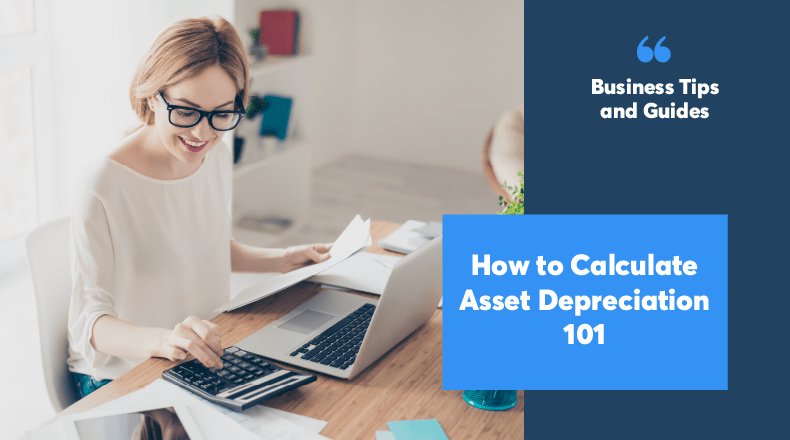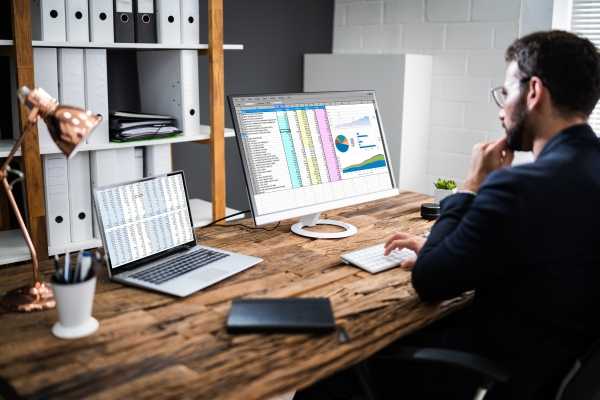Most business owners know they need to calculate asset depreciation as a cost of doing business but are unsure of where to start
In this article, we’ll take you through the process of working out your depreciation expense, and show you how to account for the sale of a depreciable fixed asset.
Getting started calculating asset depreciation
You’ll need to know three things about your asset to figure out your depreciation charge for the year.
1. Cost
The cost of an asset includes its purchase price, shipping and handling, transport, insurance, freight, and installation. However, GST and any trade discounts or rebates should be excluded.
2. Residual value
Residual value is also known as the salvage, scrap or trade-in value. This value represents the asset’s worth at the end of its useful life, taking into account resale value and condition. Assuming a scrap value of zero is prudent if you can’t estimate this.
3. Useful life
Useful life is the number of years you expect the asset will generate revenue for your business. This might depend on:
- How you use the asset
- Whether it’s prone to wear and tear
- How quickly better alternatives become available
- If there are legal limits that apply to the asset
It’s worth noting that an asset’s lifespan is not the same as its useful life. For example, a vehicle may be road-worthy for 10 years, but its useful life is 5 years if that’s how long you’ll use it in your business.
Calculating asset depreciation – different depreciation methods
Next, you must choose a depreciation method to calculate your asset’s depreciation.
Businesses tend to use either straight line or reducing balance methods, but sometimes a units of production approach is appropriate. The method you choose should reflect the level of benefits you expect to receive from the asset at different points of its useful life.
We’ll explain and demonstrate how to calculate asset depreciation under each method.
Straight line
Straight-line depreciation assumes you’ll get the same level of benefits from your asset regardless of its age and condition. Consequently, the asset’s value drops by the same amount every year.
Straight-line example
BestCo buys a steel mould for $2m to manufacture plastic chairs. BestCo will use it for 10 years and predicts it’ll have a scrap value of $400k.
The total depreciation for the steel mould over the 10-year period is its cost less its scrap value, or:
$2m – $0.4m = $1.6m
If you spread this evenly over 10 years, then you can expect to charge depreciation at 10% of $1.6m each year. In other words:
Depreciation per year = 10% x $1.6m = $160k
The steel mould’s carrying value at the end of the first year is $2m – $160k = $1.84m
The carrying value is an accounting measure of what the asset is worth after factoring in the depreciation charges recorded against it.
Diminishing Value
Also called the reducing balance method of depreciation, diminishing value assumes the asset is more useful or productive earlier on. This means the asset depreciates more in its earlier years compared to later years.
The depreciation charge is calculated by applying a depreciation factor to the carrying value of the asset.
Let’s illustrate this method based on facts from the previous example.
Diminishing value example
The depreciation factor is 200% ÷ 10 years (the useful life of the asset), or 20% each year.
So the depreciation of BestCo’s steel mould after the first year of use is:
($2m – $0.4m) × 20% = $320k
The asset’s carrying value at the end of the first year is $2m – $320k = $1.68m.
At the end of the second year, the depreciation of the steel mould will be lower:
($1.68m – $0.4m) x 20% = $256k
And the asset’s carrying value at the end of the second year of use is $1.68m – $256k = $1.424m.
Units of production
Sometimes, it may be more accurate to assess depreciation according to the asset’s outputs rather than the number of years it has been in use. This is known as the units of production method of calculating asset depreciation.
Units of production example
Instead of a useful life of 10 years, we’ll now assume the steel mound can be used to produce 100 batches of plastic chairs.
The total depreciation for the steel mould is still $1.6m, but this time you’re spreading it over 100 batches instead of 10 years.
If BestCo produces 12 batches in the first year, then the depreciation would be:
$1.6m x (12 ÷ 100) = $192k
The asset’s carrying value at the end of the first year of use is $2m – $192k = $1.808m
Disposal of fixed assets
Learning how to calculate depreciation on the sale of fixed assets can help you account for asset disposals correctly in your books.
When you sell a fixed asset, you’ll need to compare the asset’s sale price to its carrying value – that’s its book cost net of accumulated depreciation – to determine if you’ve made a gain or loss on the sale.
Disposal example
BestCo sells the steel mould after one year of use for $1.8m.
If BestCo depreciated the steel mould using the straight-line method, then we know from the earlier example that its carrying value at the end of the first year is:
$2m – $160k = $1.84m
BestCo has made an accounting loss on disposal of $40k.
Summary
As our examples show, the depreciation method you use can significantly impact the charges on your income statement, and whether you record a gain or loss on an asset’s sale.
With different depreciation methods to choose from and accounting jargon to contend with, it’s easy to see why business owners feel they don’t know how to depreciate a fixed asset.
In practice, many businesses manage their fixed assets with accounting software. Products like Xero automatically calculate asset depreciation and carrying value. With software like this, you’ll be able to track an asset’s book value and tax value at the same time. Numbers flow straight through to your financial statements and tax return, simplifying your accounting process.
At POP Business, we have helped many small businesses account for their assets and claim the right depreciation on their tax return. If you need a hand, talk to one of our experts. As a Xero Platinum partner, we can also connect you to the cloud at a 20% discount. We’ll show you how to use the software and tailor it to fit your business needs. So get in touch with POP Business today!


